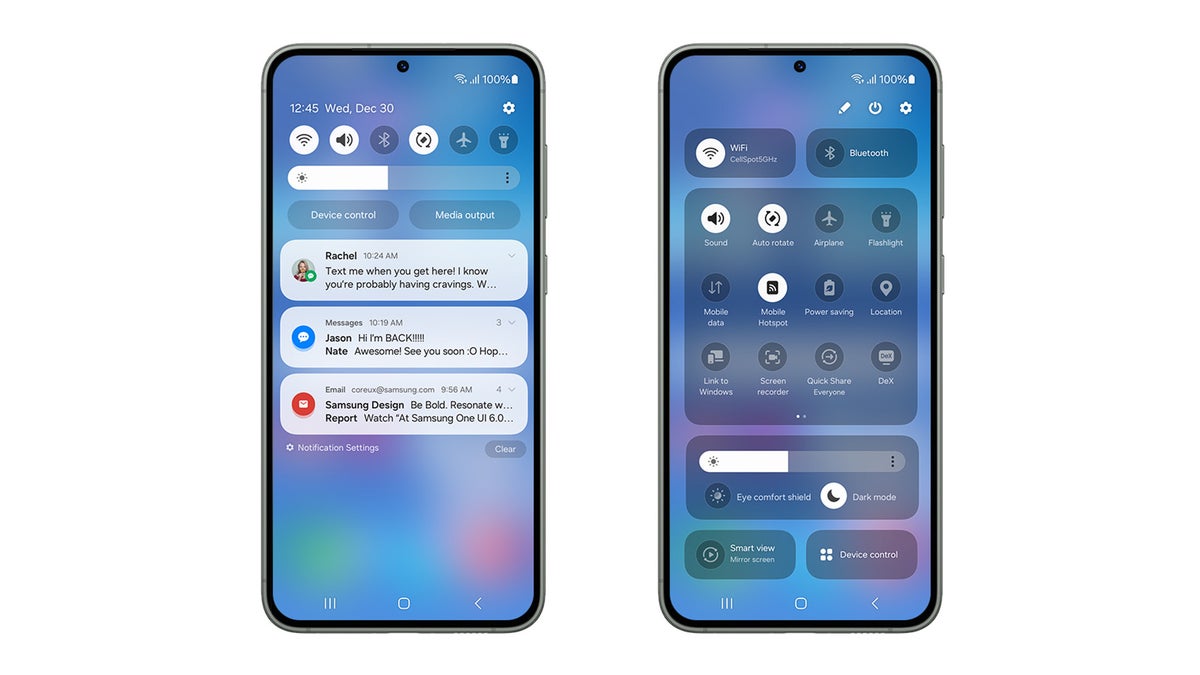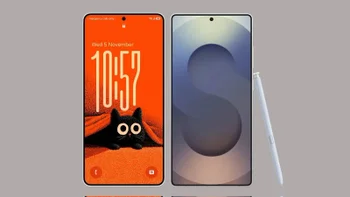Samsung’s One UI 6 Beta is here: New default font, new emojis, new access to the full Quick Settings

If you’re into trying out new stuff before everybody else, we’ve got good news: owners of Samsung Galaxy S23, Galaxy S23+ and Galaxy S23 Ultra can now join the One UI 6 Beta program.
Starting today, the program is available in the USA, Germany and South Korea and gives those that are willing a sneak peek at Samsung’s newest version of its custom Android skin. One UI 6 is based on Android 14 and it’s designed to bring a more user-friendly experience. More “streamlined design” and wider options for customization and personalization will enable that, per Samsung.
Beta programs are not just early hands-on access to cool features, but something far more important and practical: that’s the way official releases’ stability is maximized. Should you join the Beta testing program, you'll surely encounter some bugs, glitches and errors – and you’ll be able to provide feedback on those back to Samsung developers. Feedback from participants will guide final adjustments to the user experience update ahead of its official release.
Here’s what Janghyun Yoon, Executive Vice President and Head of the Software Office, Mobile eXperience (MX) Business at Samsung Electronics, says:
Simplicity is the keyword in the precursor to the public release of the One UI 6. Elements have been tweaked for a modern look and feel, as eligible Galaxy owners (again – you need the Galaxy S23, Galaxy S23+ or Galaxy S23 Ultra to participate in the Beta testing program) will find out. For example, there’s new default font and new emojis, incorporated in the Samsung Keyboard.
Accessing the full Quick Panel is a no-brainer with the One UI 6. You get instant access to the full dropdown menu and all of its settings with a simple single gesture: just swipe downward at the upper right corner of the screen. For this new gesture feature to be taken advantage of, you have to turn on the Quick Panel instant access setting. Furthermore, the Quick Panel has been refreshed with a layout that makes it even easier for users to access their most used features like adjusting the screen visibility on the go. The brightness control bar is available by default in the compact Quick Panel.
You also get an intelligently changing lock screen based on the specific modes and routines of your everyday life. For example, when the time comes for Sleep Mode to be enabled, a calming photo of a forest can pop up on your lock screen and get you in a more relaxed state of mind.
There is also a new custom camera widget, which lets users pre-select a camera mode and a storage location – like selecting Portrait Mode and setting a folder just for headshots. Something similar is rumored to be present in Apple’s Shortcuts app on iOS 17. According to a reputable iOS leaker, “Apple has added an ‘Open Camera’ action for the Camera app that allows users to pick between camera modes and immediately open to any preset using Shortcuts”.
Long story short, before One UI there was TouchWiz (2008-2016) and Samsung Experience (2017-2019). Both of these software overlays were often criticized for being bloated and laggy. That’s why Samsung went back to basics in 2018 and unveiled One UI at Galaxy Unpacked in February 2019 alongside the Galaxy S10 series, Galaxy Buds and the Galaxy Fold.
Starting today, the program is available in the USA, Germany and South Korea and gives those that are willing a sneak peek at Samsung’s newest version of its custom Android skin. One UI 6 is based on Android 14 and it’s designed to bring a more user-friendly experience. More “streamlined design” and wider options for customization and personalization will enable that, per Samsung.
“Our mission with One UI is to reflect the unique preferences of our users in every aspect of their mobile experience. Every iteration of One UI responds to the needs of our user community, and we look forward to user feedback on One UI 6 as we create a richer, more intuitive experience for all.”
What’s new in One UI 6 Beta?
Accessing the full Quick Panel is a no-brainer with the One UI 6. You get instant access to the full dropdown menu and all of its settings with a simple single gesture: just swipe downward at the upper right corner of the screen. For this new gesture feature to be taken advantage of, you have to turn on the Quick Panel instant access setting. Furthermore, the Quick Panel has been refreshed with a layout that makes it even easier for users to access their most used features like adjusting the screen visibility on the go. The brightness control bar is available by default in the compact Quick Panel.
There is also a new custom camera widget, which lets users pre-select a camera mode and a storage location – like selecting Portrait Mode and setting a folder just for headshots. Something similar is rumored to be present in Apple’s Shortcuts app on iOS 17. According to a reputable iOS leaker, “Apple has added an ‘Open Camera’ action for the Camera app that allows users to pick between camera modes and immediately open to any preset using Shortcuts”.
Samsung points out that Beta testers for One UI 6 will enjoy “robust security and privacy” with “total peace of mind”. Our advice, for Galaxy S23 owners that are inclined to join the testing, is to do so with caution if they join the Beta program with their daily devices. Beta programs, especially at first, can be buggy.
Previous One UI versions, plus some history
Long story short, before One UI there was TouchWiz (2008-2016) and Samsung Experience (2017-2019). Both of these software overlays were often criticized for being bloated and laggy. That’s why Samsung went back to basics in 2018 and unveiled One UI at Galaxy Unpacked in February 2019 alongside the Galaxy S10 series, Galaxy Buds and the Galaxy Fold.
- One UI 1.0 was built over the Android 9 "Pie" OS, bringing dark mode to the table. It refined the Always-On Display option and the gesture navigation. This version was succeeded by One UI 1.1, which was a minor update for the cameras, overall performance, plus fingerprint and facial recognition.
- One UI 2.0, based on Android 10, was launched by Samsung in 2019. This version of the custom Android overlay greeted users with Dynamic Lock Screen (different wallpaper with every unlock), a Trash folder in Files, native Android Auto, and more.
- One UI 3.0 came in December 2020 and was based on Android 11 (you get the pattern) and introduced a translucent notification panel, brief notifications, new volume controls (on the right or left of the device alongside the physical volume keys), it slightly enhanced widgets, and all in all enabled smoother animations throughout the whole UI.
- One UI 4.0 was released to the public in November 2021 and initially rolled out to the Galaxy S21. It focused on customization, privacy, and access to Samsung's expanding ecosystem. The One UI 4.1 update brought Smart Calendar, added the option to choose from virtual RAM options (2, 4, 6 or 8 GB), a redesigned palette picker, some Smart Widgets, separate Left/Right audio balance, extra brightness toggle, Pro Mode on more cameras and, notably, a Night Mode portrait feature.
- One UI 5.0 – the current (not for long) One UI came in October 2022 and while not presenting the most groundbreaking upgrades over One UI 4, it did enable major performance optimizations and a few clever optimization tweaks, like a simplified way to extract text from an image.
Follow us on Google News












Things that are NOT allowed:
To help keep our community safe and free from spam, we apply temporary limits to newly created accounts: